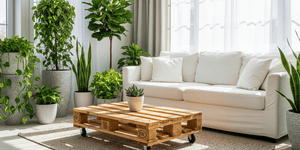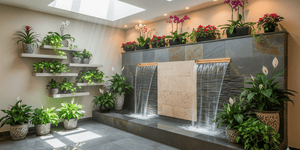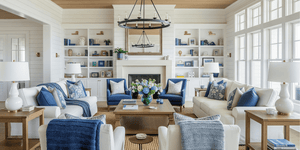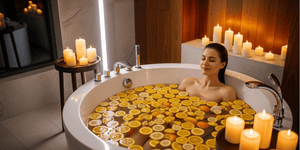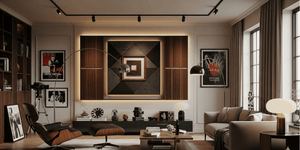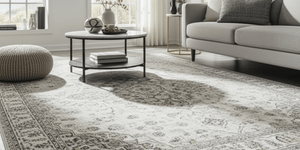Personalize Your Home With Mixed Interior Styles

Personalize Your Home With Mixed Interior Styles
It's not unusual to want to mix interior styles in one's home or in a few specific rooms. Some individuals may want to feature a treasured antique piece that has been passed down for generations. Being able to view that piece on a daily basis somewhere within the home is more meaningful to them than a strict adherence to any one style. Others have a favorite design style, yet find themselves attracted to a few key pieces from a different era. If your overall look is modern farmhouse, but you'd like to incorporate some features that would technically be considered industrial, those two styles are often similar enough to be able to blend here and there.
In truth, it's actually rare to remain strictly loyal to one specific design style. Today's styles are typically a bit more relaxed, with a focus on comfort and visual appeal. A strict dedication to one specific design type sometimes leads a room to emit a somewhat formal or sterile appearance, which makes the space feel more like a museum rather than a place in which to relax and feel comfortable.
If you're still not convinced it's possible to blend seemingly disparate decor styles, consider the smashing success of shabby chic decor and its ability to introduce incredibly interesting, old-style features to otherwise modern homes. This blending of styles shows that it is absolutely possible to successfully marry ostensibly "odd couple" decor arrangements.
Subtle Distribution and Layering
If you really want to blend different styles together, it's important not to segregate the different styles into separate sections of a room. Blending and layering styles means a subtle incorporation of them can be found almost everywhere during a visual scan of the space. To maintain continuity throughout an area, consider using items with similar shapes and/or that maintain a consistent vibe. In other words, if the styles you are trying to mix together are casual, then formal pieces, even when distributed subtly throughout the room will likely stick out like a sore thumb.
Use Color or Stain
Unify — If you only have one or two pieces that deviate from your overall style for a given room, it may be possible to unify them into the overall space through the use of same or compatible coloring. By keeping a room simple with two or three compatible colors, it's much easier to incorporate a piece or two that isn't generally considered compatible with a particular style. Whether your overall color scheme is a blend of calming neutrals, or whether you prefer a bolder look with two or three bright colors is really up to you.
A Focal Point — Conversely, it may also be possible to make a statement with one or two bold items by allowing them to be attention-grabbers, either by way of their color and/or their style. A 19th century red lacquer Chinese cabinet may look particularly striking in a room that is otherwise filled with neutral colors such as beiges, whites, and grays.
Match Wood Stains — Many people love to incorporate wooden decor items and furniture within their home. In general, the closer together two disparate styles are in terms of wood stain color, the more likely they will be compatible with each other when placed in the same room.
Span the Decades
If you love the mid-century look of the 70s, but find yourself drawn to items that were hallmarks of the 1950s or 1960s, these decades are all close enough to each other that a mix of items from all three decades will likely blend beautifully together. If you like the look of both traditional and modern pieces, consider focusing on transitional pieces, which are a mix of the best of both of these styles. There are also many farmhouse decors that have remained connected to each other over time including
- Traditional
- Rustic
- Modern
- Vintage
All of these can be mixed and matched together to create a relaxed and comfortable look.
Styling 101 - Don't Forget
Scale — Don't forget about styling basics such as consideration to scale. If you have a gorgeous antique dining room table, but its heavy style and size overwhelms your smaller dining area, it's probably going to be very difficult to successfully marry such a large piece to an undersized area.
Balance — Also consider the balance of objects within a space. If you decide to use end tables that don't strictly match each other, at least make sure they are of similar height and width in order to create equilibrium when viewing your sofa.
Pattern — It's important to be consistent with pattern throughout a room as well. If you've successfully created a blend of mountain lodge retreat and rustic farmhouse in your family room, the pattern from flowered pillows handed down from your grandmother will look out of place, even if they are similar in color and shape with other items in the room.
Function — Lastly, if you love the look of certain pieces, but they are either too delicate to function safely around a busy family, or they aren't practical in that they don't provide enough storage or work space for key areas of the home, it may be necessary to find other less-used spaces in which to incorporate them, or you may have to pass on them altogether. As fantastic as they would look in a particular space, if the pieces aren't truly practical and functional, over time they're likely to become a source of frustration rather than enjoyment.
It's Ok to Start Slow
If you're nervous about blending styles, it's ok to start off slow. Inexpensive pieces such as artwork, rugs, pillows, side tables, and small chairs are perfect for beginning your exploration of a more eclectic style in a space. In fact, the overall rule for blending styles is to set aside 80% for one main style, then blend in 20% of something else. As you become more confident about the types of styles you like, you can then branch out into other areas of the home with bigger pieces such as dining room tables, sofas, armoires, and the like.
If you want more tips on how to successfully mix interior styles, please contact us.
